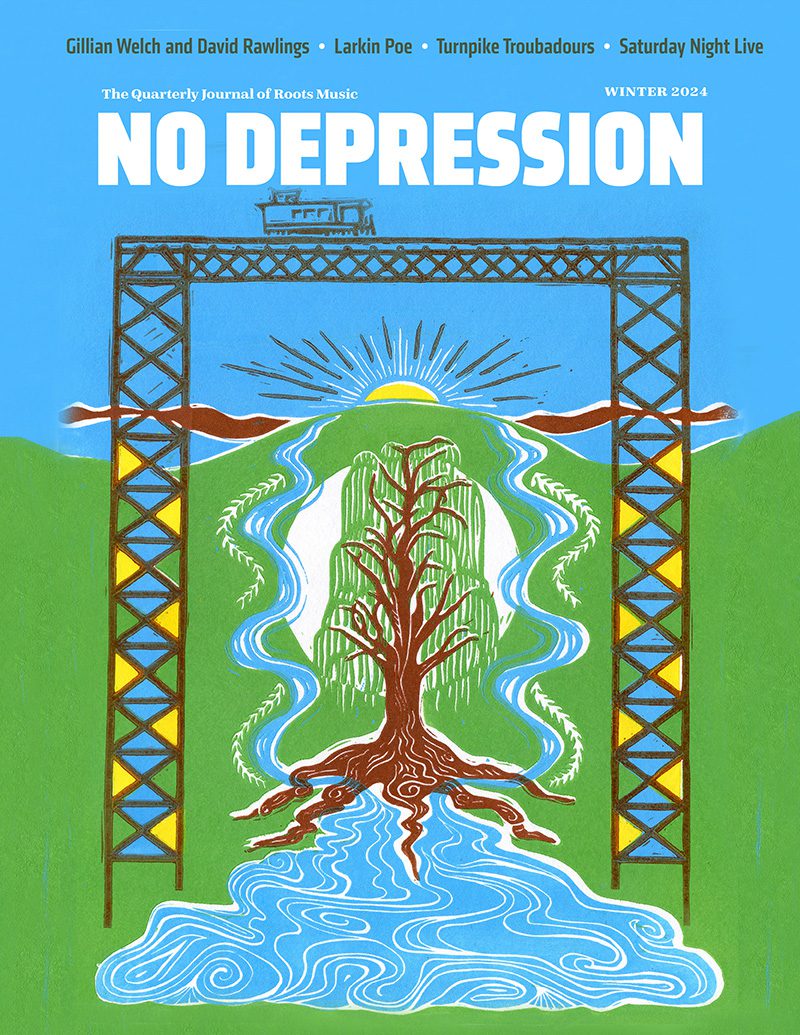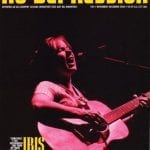Hem – All that useful beauty
“My original idea was that we’d have a different singer for every song,” Messe reveals. “We had talked to all sorts of different singers, to see who wanted to do what….But as soon as I heard Sally singing ‘Half Acre’, it was like everything clicked.”
That he even had the opportunity to hear her was pure dumb luck. In early 1999, plans were coalescing for Messe, Maurer and guitarist Steve Curtis (an old college pal of Messe) to record Rabbit Songs. They still had no vocalist, so Messe placed an ad in the Village Voice. What followed was an arduous process of weeding through countless submissions that weren’t anywhere near what Messe had in mind; he soon gave up and pulled the ad.
But not before it had been spotted by Ellyson, a complete novice who had no previous performing experience yet possessed a natural vocal gift. “I had an old boyfriend who just really kept bugging me to sing,” Ellyson recalls. “I had noticed that there were music want-ads in the Village Voice. And I always sort of wanted to sing, but I guess I needed that encouragement — just something that simple as one person to really kind of get at me for it.”
Ellyson contacted Messe, who had given up on finding a singer through the ad. Perhaps just to be polite, he offered to have her come by and sing to his piano accompaniment, but Ellyson was intimidated by that prospect. She did, however, have a tape of lullabies, largely rendered a cappella, that she’d made for a few friends who had recently given birth to children.
Ellyson had no way of knowing, but those lullabies tapped into an aesthetic that almost mirrored Messe’s vision for Rabbit Songs. (Indeed, they ended up using a half-minute selection taken directly from the tape, “Lord, Blow The Moon Out Please”, as the album’s opening track.)
Mostly the lullabies were tunes Ellyson remembered from her youth. “Some of the songs my mother said she learned at camp,” she says. “They would all go into their tents, and there was a lake, and the counselors would sing all these old songs, and it would carry over the lake to all the tents.
“And these songs were just, just…” Ellyson is stopped short, caught up trying to convey the emotion, “…beautiful. Mesmerizing. They make you feel like you are in a magical warm place. They just bring you to where you feel like you have a beautiful moon, under a beautiful sort of picturesque starry sky. They evoke a sort of nursery-rhyme landscape. It was very comforting, to me.”
As fate would have it, this was all she could offer to Messe as evidence of her singing style. “I still had one tape left, and I said, ‘Look, I’ll lend you this tape, you can give it back to me.’ He was like, ‘Actually, I’d prefer a dub.’ So I said, ‘All right, let me just run over to your house and make a dub in your tape deck,’ because I didn’t have any way of doing that.
“So, basically, I heard later, he didn’t even have any intention of listening to that tape. He had pulled the ad like weeks before, and he was just trying to get me out of his hair. But because I had made a dub in his tape deck, he accidentally pushed play on the wrong side, and he was like, ‘What’s this?'”
The impact on Messe was immediate and indelible. “Imagine being a painter, and you open up a tube of paint that has this amazing color in it that you’ve never seen before,” he says. “And all of a sudden you could paint these pictures that you had never imagined.”
Yet Messe admits he wasn’t quite sure at first if Ellyson’s voice would work with his songs. “Even though that tape was life-changing, and just so magical, I still wasn’t sure it was the right voice for us,” he recalls. “I called her up and I was like, ‘This is the most incredible voice I’ve ever heard, but I’m not sure if it’s right for us.’ If you can believe I said that.”
Any lingering doubts were put to rest when they had their first session to record the initial Rabbit Songs cuts. “That first weekend we went in to make this stuff,” he remembers, “I think we recorded ‘When I Was Drinking’ and ‘Half Acre’; we had a little string trio for ‘Half Acre’. And, that was the moment. When we were playing through ‘Half Acre’ and we heard the sound, it just clicked. It was like, wait a minute, we could actually do this. It could actually sound just like we’ve always thought it was going to sound.”
Another integral part of this revelation, it’s worth noting, was the expertise of Maurer, who brought a level of studio savvy and expertise that few bands are fortunate enough to have right in their midst. Maurer spent the ’90s making a living as an engineer, working on high-profile albums by Fountains Of Wayne, Luna and other alternative-pop bands as well as producing projects for several lesser-known acts.
The initial idea for Rabbit Songs, Messe explains, “came out of many late-night conversations with Gary. He was producing lots of wonderful acts, but it wasn’t really part of him. We both shared the same sort of musical interests, in terms of, like, classic country, and the history of American music. And we kept talking about this album that we would do someday.”
Guitarist Steve Curtis, who also plays banjo and mandolin as well as contributing harmony vocals, came aboard shortly thereafter, and in fact had played a part in previous incubating phases of Messe’s vision. “Dan and I were involved in a project in college together,” he says, referring to their late-’80s school days at Carleton College in Northfield, Minnesota. “He had written what was essentially a song cycle; a handful of the songs on both Rabbit Songs and Eveningland come from that. And he had brought me on as a guitarist and singer for that project.
“It wasn’t until he and Gary met that it became clear we had the means to do what we wanted to with these songs that we’d been working up for a long time. So I was brought back into the mix at that point. Many of the things that we were hoping for over the years really came into focus around Sally’s voice and Gary’s production ideas, and just the interaction between all four of us.”




